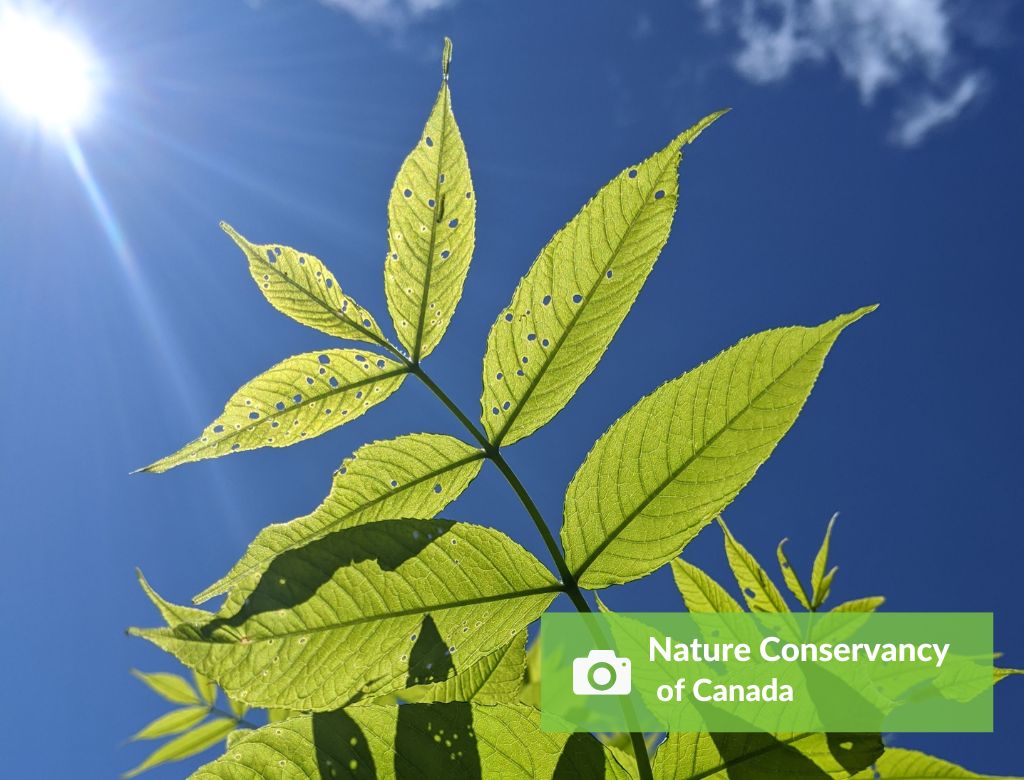
Black Ash
Identification
Black ash are deciduous trees that grow 15 – 25 m tall. Two other trees in Manitoba may get misidentified as black ash: the native green ash and non-native Manchurian ash. The bark of a black ash has a corky texture and has seven to eleven serrated, dark green, oval shaped leaflets per leaf compared to green ash which has five to seven leaflets per leaf. Black ash are greyer whereas Manchurian ash are tan.
Habitat
Black ash are found in urban settings but prefer to grow in undisturbed wetland areas near rivers, swamps or fens, where they live 150 – 300 years. An important consideration in Manitoba is the emerald ash borer beetle. Where present, this non-native insect has upwards of a 90% mortality rate on black ash.
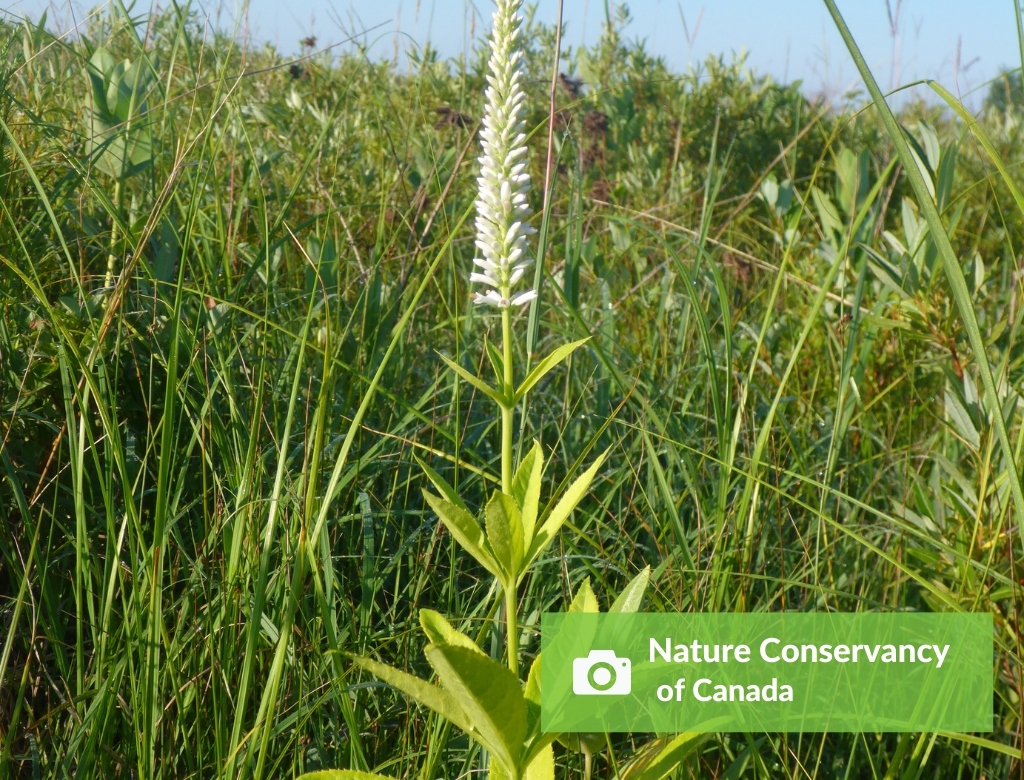
Culver’s Root
Identification
Culver’s root is a tall perennial that measures between 1-2 m, with spikes of tiny pale pink, purple or white flowers that bloom July through August. The leaves grow in groups (called whorls) of three to seven, are serrated, and usually occur in widely spaced groups along the stem. As the only member of its genus in Manitoba, Culver’s root is unlikely to be confused with other species.
Habitat
Culver’s root grows on the edges of prairie and mixed-meadow habitat that is moist and partially shaded. In Manitoba, this species is also found in ditches, and along fence lines and road allowances; therefore, it is susceptible to the practices that go into maintaining these areas.
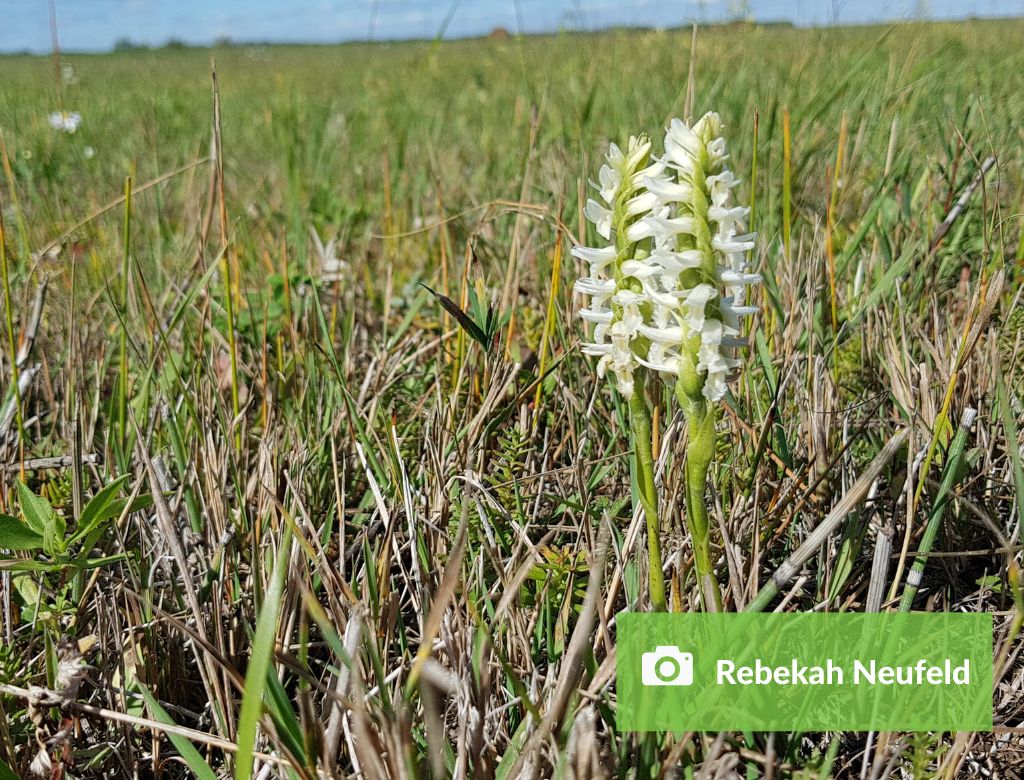
Great Plains
Ladies’-tresses
Identification
Great Plains ladies’-tresses are a small perennial growing 12 – 38 cm in height. The leaves are over 1 cm wide and up to 14 cm in length and will wither before blooming occurs in September. There are multiple, white-coloured flowers that spiral up the stem, each measuring about 1.5 cm in length. Great Plains ladies’-tresses have been confused for other species of
ladies’-tresses and may need an expert eye to differentiate.
Habitat
Great Plains ladies’-tresses tend to grow in soils with low acidity, in prairie and meadow habitats. Moist areas including ditches and road allowances provide habitat as well, therefore the orchid is susceptible to the maintenance of these areas.
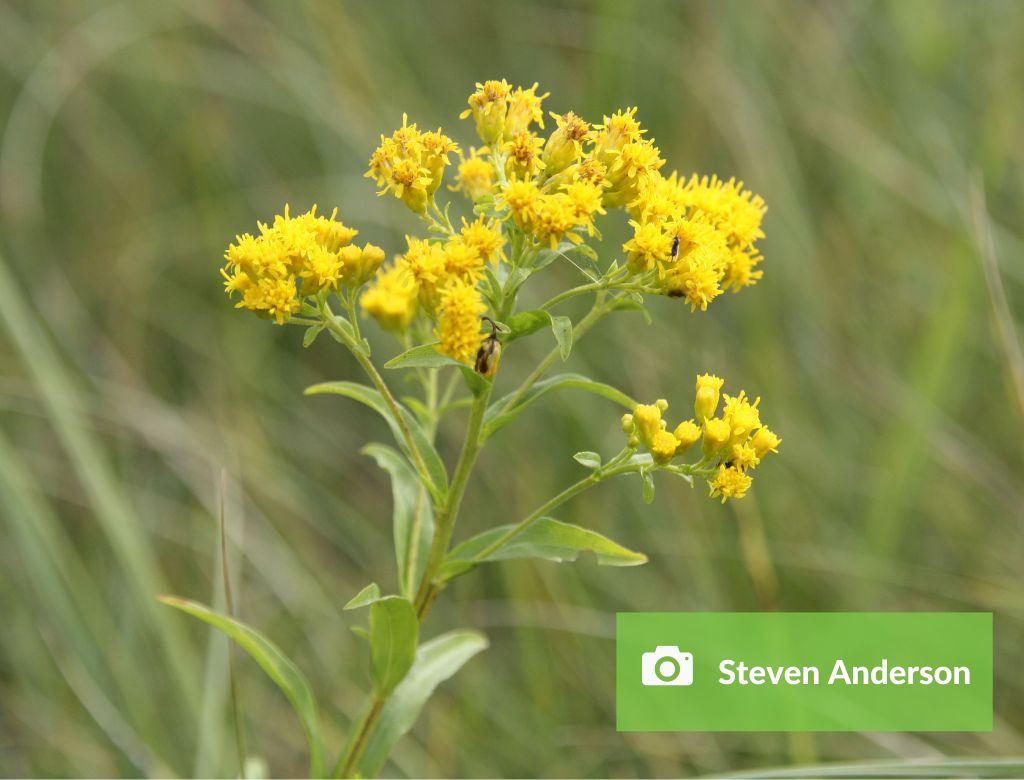
Riddell’s Goldenrod
Identification
Riddell’s goldenrod stand up to one metre tall and have yellow flower clusters supporting hundreds of tiny individual flowers, blooming from the end of August to the beginning of September. With over 30 goldenrod species throughout Canada, Riddell’s goldenrod can be
differentiated by the leaves that are strongly curved and partially folded, giving it a v-shape in cross-section; however, a botanist may be needed to properly make the identification.
Habitat
Riddell’s goldenrod grows best in tall-grass prairie, shrubby fens and even along undisturbed ditches or road allowances. In early growth development, Riddell’s goldenrod requires large amounts of light. Wildfires, grazing and drought can reduce competition from other plant species, reduce shading by the thatch layer, and also keep woody encroachment at bay.

Small White
Lady’s-slipper
Identification
The small white lady’s-slipper is a perennial orchid that grows 10 – 35 cm tall. The slipper shaped flower, which blooms May through June, is white in colour with light purple veins. A single plant can have between three and sixty stems, with each stem surrounded by two to four leaves, and surrounding a single, sometimes double, flower. Hybridization with yellow lady’s-slipper may occur, making identification challenging.
Habitat
Small white lady’s-slippers grow in native prairie where the soil is calcium rich and moist. They are generally found in open areas that are impacted by natural disturbances such as wildfires and light grazing. When these disturbances do not occur, small white lady’s-slipper can be negatively affected by woody-plant encroachment. Approximately 80% of the known grow
sites of small white lady’s-slipper in Manitoba occur near roadways; therefore, the activities involved in maintaining these areas may pose a risk for the species.
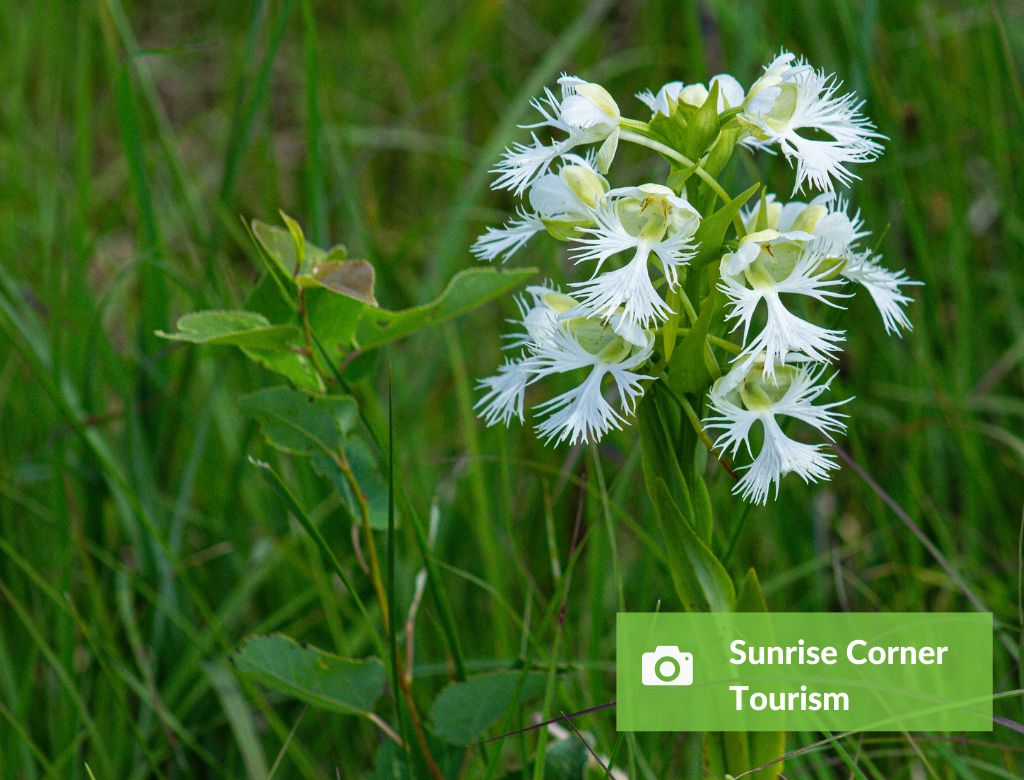
Western Prairie
Fringed Orchid
Identification
Western prairie fringed orchids are tall perennial plants that grow to a height of 40 – 90 cm. Multiple white flowers are deeply fringed and arranged along the upper part of the stem. These flowers bloom from late June to mid-July. There are usually five to seven thin leaves scattered along the stem.
Habitat
Western prairie fringed orchids grow best in wet, calcium-rich, prairie and meadows. The Manitoba population in and around the Tall Grass Prairie Preserve is the most northern and contains over half of the global population. Western prairie fringed orchids can be observed in both undisturbed habitat and disturbed areas such as roadside ditches.
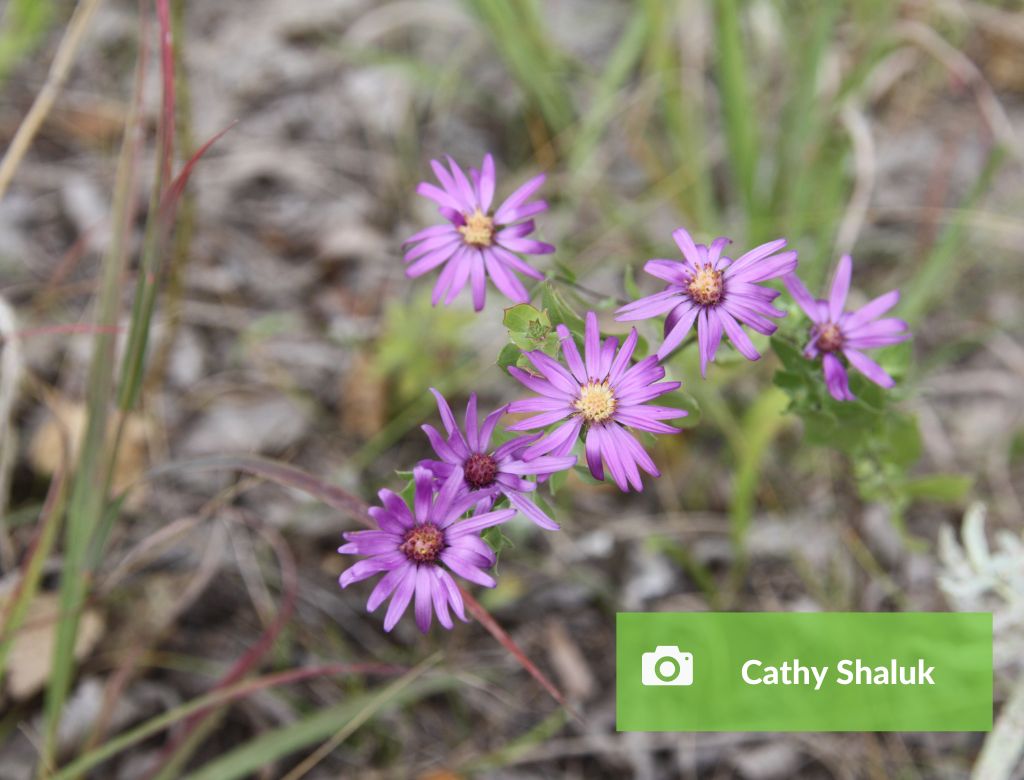
Western Silvery Aster
Identification
The western silvery aster is a perennial plant that grows over 30 cm in height. A plant typically has no more than ten purple flowers, though on occasion may have as many as sixty, that bloom August to September and are arranged on sparsely branched stems. Leaves are thin and lance-like and when observed closely, many silvery hairs can be seen.
Habitat
In Manitoba, western silvery aster are found in prairie areas where the soil is calcium-rich and generally gravelly, occasionally growing in the thin soil of the Canadian shield. Thriving in a gravelly habitat means western silvery aster can be inadvertently destroyed during resource extraction or road maintenance.
